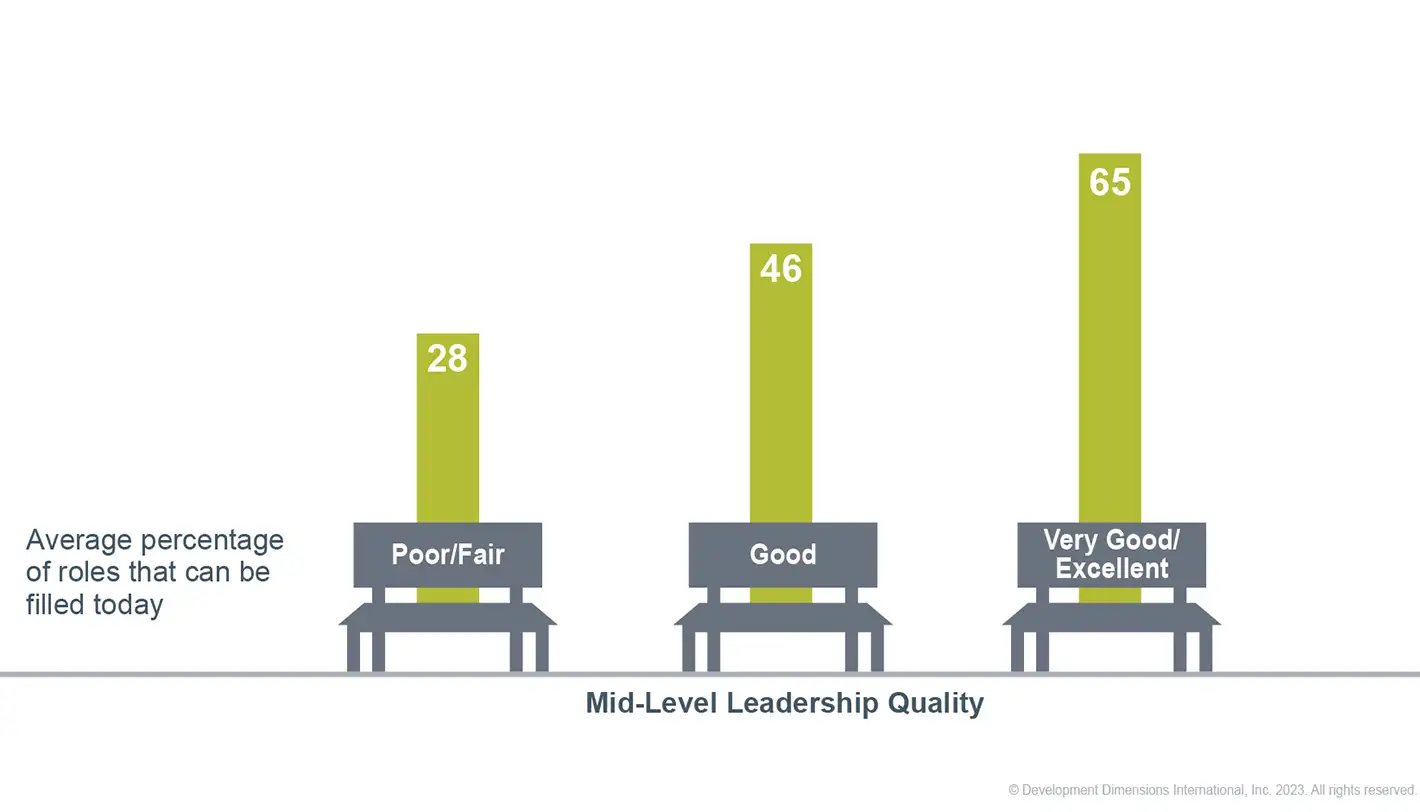BY THE NUMBERS
Mid-Level Leadership Quality Drives Bench Strength

Mid-Level Leaders Struggle Despite Forming the Backbone of the Leadership Pipeline
In a role where their value is often obscured, mid-level leaders are frequently under scrutiny. Consider that CEOs talk directly with senior leaders. CEOs also know the crucial management role that frontline leaders play. But it’s easy to overlook or misunderstand how middle managers translate strategy into execution.
As we noted in Global Leadership Forecast 2023, the top two concerns on CEOs’ minds are attracting and retaining top talent and developing the next generation of leaders. Only 12% of companies report having a strong bench of leaders ready to step up to manage those challenges.
Our data shows, however, that mid-level leaders play a powerful role in creating the talent backbone of the organization. Companies with high-quality mid-level leaders are able to fill 65% of critical leadership roles, compared to only 46% of roles in companies with average-quality mid-level leaders and 28% of roles in organizations with low-quality mid-level leaders.
Companies with high-quality mid-level leadership are also 3X more likely to be awarded a "best place to work" award compared to companies with poor- or fair-quality mid-level leadership.
It’s unlikely that mid-level leaders are simply poor performers. Rather, as they become further removed from day-to-day operations, many mid-level leaders struggle to adapt to the higher-level leadership challenges of their roles. 65% of mid-level leaders reported that their stress level increased significantly upon entering their role. Worse, 60% reported frequently feeling used up at the end of the workday, putting them at high risk for burnout.
We found that the three biggest direct contributors to stress when transitioning to the mid-level are:
- Experiencing a significant increase in role complexity.
- Assuming responsibility for a profit/loss function.
- Acquiring more direct reports.
As HR and senior leaders focus on more immediate challenges, it’s no surprise that they may overlook support and development for mid-level leaders. However, savvy CEOs and their HR partners are increasing their efforts to strengthen and enable their mid-level leaders as part of a competitive strategy to improve the stability and agility of their organization.
